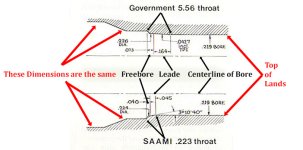So the real answer is that the Smith and Wesson MP Sport 2 has a carbine length gas system. The dwell time is too short to reliably cycle most steel cased ammunition that is uncoated as Tulammo is. There are of course exceptions to this, which someone will soon chime in with but as a general rule this is true.
Shorter dwell time means higher pressures in the case as the gun unlocks and begins to extract. This is not an issue with brass and generally not an issue with some coated steel case as the friction is low enough between the chamber wall and the casing to reliably extract. Not so with bare steel. No amount of lubrication or chamber scrubbing will fix this, the issue is in the short gas system. Your gas port sizing can also play a role in this, a larger gas port will typically have the umph to muscle the case out (or shear the rim). Smaller gas ports may not. Either way you're eventually going to shear off your extractor. I don't know what Smith and Wesson's spec on the gas port is.
The carbine length gas system was adopted to ensure reliable function in dusty and dirty environments and in rifles that may not be well maintained, but specifically for brass cased ammunition. As a result most carbine length guns are significantly over gassed to ensure function. The trade off is a short dwell time, high pressures during primary extraction, a sharp snappy recoil impulse, and guns that typically don't run steel very well or destroy extractors.
Mid-length systems have a longer dwell time, which allows the pressure to drop a bit more, and the case to contract a bit more, before the gun begins to unlock and thus typically run all steel very well. It's why mid-length gas systems are so prevalent now and rapidly becoming the norm. Additionally with a properly sized gas port they run as reliably as carbine gas length guns. They also have a much smoother and softer recoil impulse for a gun of the same weight.
Rifle length gas systems follow the trend and are typically very soft shooting and run well with most ammunition. Some rifle length gas systems actually wont cycle with Tulammo because it is rather underpowered as .223 offerings go. One of mine will not reliably cycle with it. It short strokes, not enough gas pressure to complete the cycle.
Anyway, there's your answer. If you continue to fire the rifle with steel cased ammunition you will continue to have failures to extract, damaged rims, and eventually you will shear your extractor and have to replace it. Some steel cased offerings will work better than others, you will have to try different ammunition. I have sheared the extractor on my carbine length gas gun and I have seen it many times. I sheared mine on the wolf military classic with the green lacquer. People will give you the "mine's just fine" routine, most of them haven't put a significant number of rounds through their rifles. It took me about 3500 rounds. Thankfully its a cheap and easy repair easily off set by the money saved through shooting steel.
Edit : For proper lubrication, thin layer of
TW25B on the sliding and camming surfaces of the BCG and associate parts as well as on the exterior. One drop of your favorite oil through both of the carrier gas vents, and work the oil into the gas rings by articulating the bolt back and forth by hand. The fouling will wipe off with a paper towel the next time you go to clean.
Keep the FCG clean and
greased and your rifle will run like a clock.



